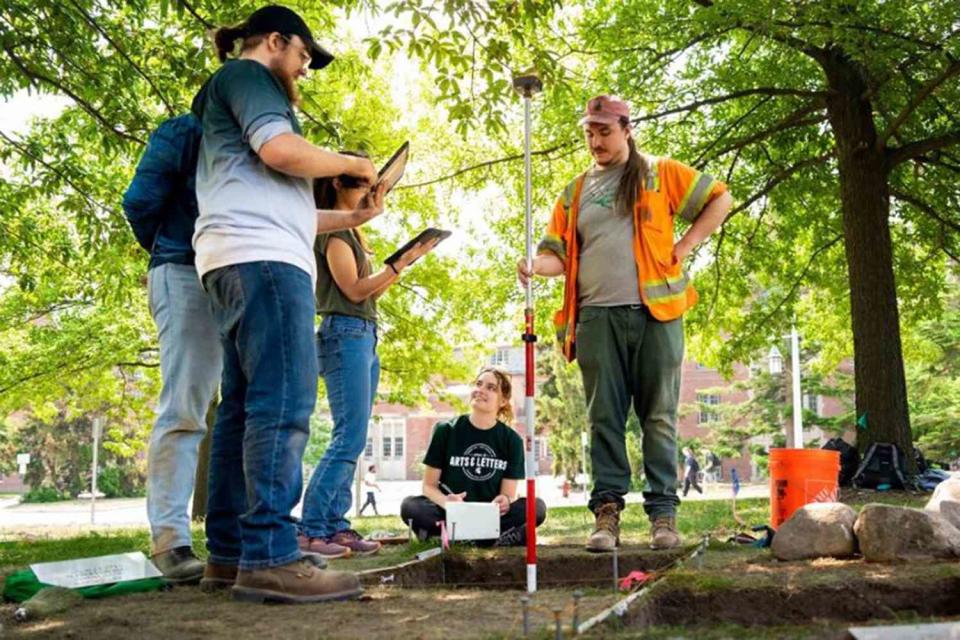Michigan State University Discovers 19th Century Observatory Buried on Campus: 'Very Humble Beginnings'
Workers were installing posts this summer when they discovered the foundation for the 142-year-old observatory

Michigan State University Communications
Michigan State University announced the the discovery of a 142-year-old observatory that was buried on campus.Michigan State University (MSU) students didn’t have to travel far and wide to experience a major archaeological discovery as part of their coursework.
Earlier this month, MSU announced that the foundation of what was once the school’s first observatory, built in 1881, was discovered this summer.
“People are really curious about the past. They’re very invested in this campus and its history and being able to share a little bit of its history and my knowledge with people is just very rewarding,” said Stacey Camp, director of Campus Archaeology Program (CAP) and associate professor of anthropology at MSU, per a video shared by the university.
At the time, workers from MSU’s infrastructure division were installing hammock posts near the students' residence halls when they hit upon a very hard surface under the ground. It prompted them to contact CAP.
Upon further surveying and research on the site, CAP confirmed that it was indeed the observatory’s foundation that the infrastructure division encountered.
“It gives us a sense of what early campus looked like in the late 19th century,” Ben Akey, an MSU campus archaeologist and anthropology doctoral student, said in a news release. “The original campus observatory was built and used at a time when Michigan Agricultural College — what would become MSU — was a radically different institution with only a handful of professors and a relatively small student body.”
The late Professor Rolla Carpenter, an alum of Michigan State Agricultural College who returned to the school to teach astronomy and other subjects, constructed the observatory 142 years ago, per the university.
“In the early days of MSU’s astronomy program, Carpenter would take students to the roof of College Hall and have them observe from there, but he didn’t find it a sufficient solution for getting students experience in astronomical observation,” said Akey, per the news release. “When MSU acquired a telescope, Carpenter successfully argued for funding for a place to mount it: the first campus observatory.”
Never miss a story — sign up for PEOPLE's free daily newsletter to stay up-to-date on the best of what PEOPLE has to offer, from celebrity news to compelling human interest stories.
Akey also told The Washington Post that the old observatory, where a telescope was housed and astronomy classes were conducted, was probably demolished sometime in the 1920s. Michigan State’s current observatory, constructed in 1969, is located south of the campus at the intersection of Forest and College roads.
Related: Coast Guard Says 'Debris Field' Discovered Near 'Titanic' amid Search for Missing 'Titan' Sub
Next summer, the site will be open as a dig for MSU’s undergraduate students to earn course credit and for them to gain experience in excavation. “We anticipate having 18 to 20 students work on the project and get great experience doing archaeology,” said Camp in the news release, adding: “I love watching students connect with artifacts and try to tell a bigger story about humankind with those objects.”
Both Akey and Camp told the Post that the site's additional excavation could further enlighten people about MSU’s astronomy studies and early campus life from that era.
“I think it really demonstrates our very humble beginnings,” Camp said. “And how we’ve now come so far, where we have all kinds of amazing scientists here on campus and a planetarium.”
For more People news, make sure to sign up for our newsletter!
Read the original article on People.

